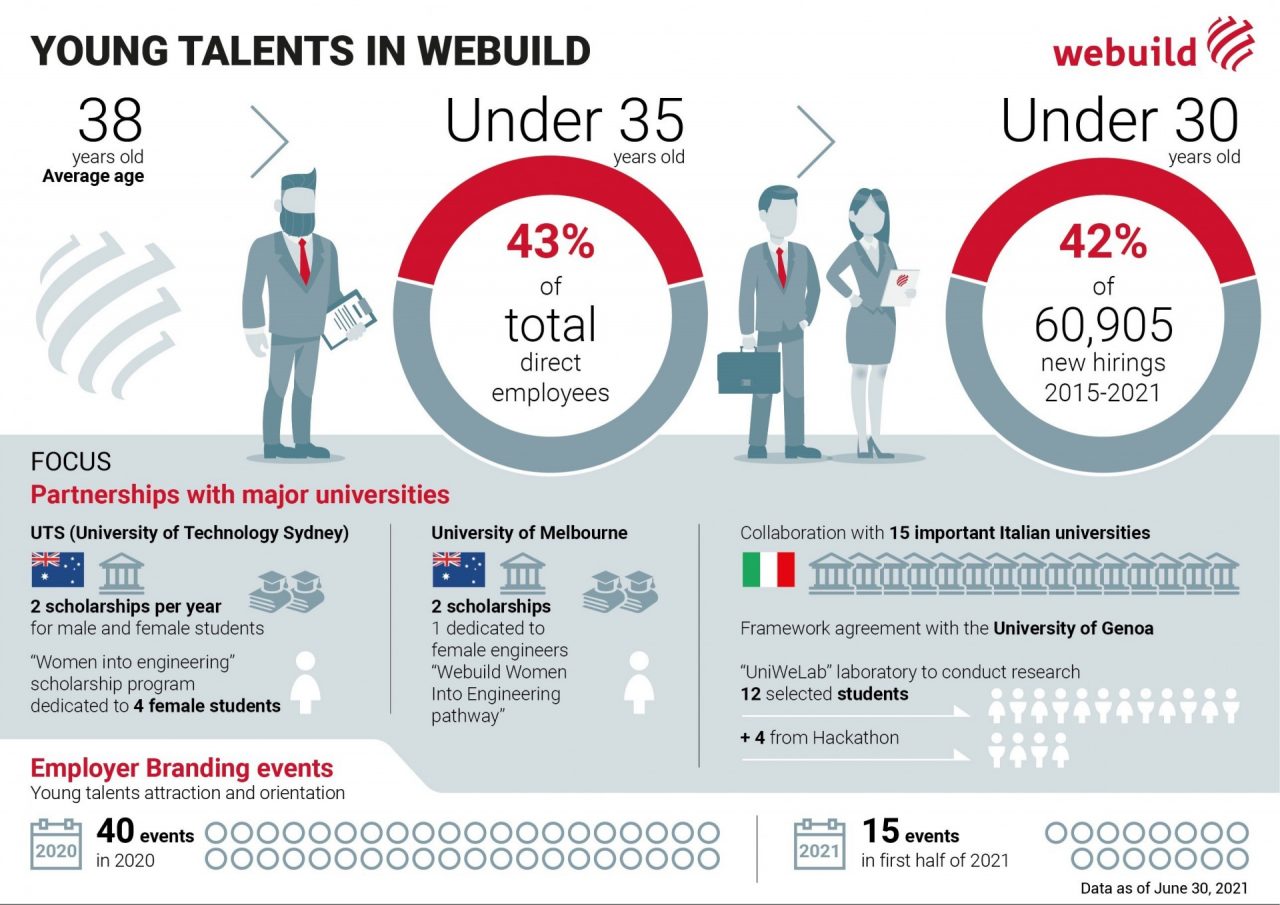A battle for big-ticket talent has begun in the United States. With the revival of the construction industry and the reopening of some of the country’s biggest worksites, the demand for qualified workers—particularly engineers—is growing. The future of competition across the sector will depend heavily on companies’ respective abilities to attract the best and brightest.
In Covid-19’s toughest year, the industry suffered a loss of 1 million jobs, but only 80% of those have been replaced. According to data from the Associated Builders and Contractors, to meet current construction demands, companies in the large-scale works sector will have to hire 430,000 people during 2021 and 1 million over the next two years. Selecting new personnel for strategic projects will be the main battlefield where competition among the U.S. sector’s “heavy hitters” will play out over the coming months.
“Black April” and the search for new talent
“April was the cruelest month” in 2020 for the construction industry (as it was for almost every other manufacturing sector). Over the course of those 30 days, employee numbers reported by the U.S. Bureau of Labor Statistics dropped from 7.6 million to 6.6 million. Some one million people were out of work as a direct result of worksite closures, first imposed by lockdowns and later by other measures taken to prevent the spread of the pandemic.
This collapse occurred in an industry where the average age of workers (41) is among the highest, as is the monthly turnover rate (an average of 5.2% compared with 3.6% across other industries). This is just one indicator of how specific positions typically respond to contingent needs rather than to technical specifications of workers.
Branka Minic, CEO of the Building Talent Foundation (BTF), a coalition of the largest companies in the residential sector committed to education, training and policies to foster young people’s development, told US trade magazine ConstructionDive, “It’s a war for talent. It’s really bad out there. Everybody is screaming for people, not only in our industry. We need to fight for every person and be more agile in our efforts.”
Bargaining power in top talents staffing
This challenge is a collective one. Of course, one of the most foolproof methods for attracting qualified personnel is paying competitive wages, even if doing so risks undermining some companies’ financial sustainability. According to a report by the Federal Reserve Bank of New York, the average wage of non-college-educated people increased by 26% in the last year.
The Preferred Contractors Association, another collective of firms in the construction industry, has reported wage increases of up to 10% over the past year in some regions that have been hit particularly hard.
Indeed, salary leverage works mainly for less highly skilled positions. Research by VelvetJobs, an international advising firm on labor and talent, shows that 50% of millennials choose a job not so much for the entry-level salary as for career opportunities. Preference is for large companies that focus on young people’s development by offering training and involvement in the most ambitious projects. In essence, young talents are less motivated by financial prospects and more interested in what the company is able to offer them in terms of future growth.
Webuild and young talent
In the U.S. and around the world, Webuild Group is currently engaged in major infrastructure projects. From the construction of the first high-speed line in Texas to the Grand Paris Express in the French capital, personnel selection and promotion policies are at the heart of the Group’s development strategies.
To respond to the need for highly qualified staff between 2015 and 2021, Webuild hired 60,000 people. Currently within the Group, 36% of employees are women, and the average age is 38, lower than the industry average across the U.S. Additionally, many young people are involved in the Group’s large-scale construction sites active around the world. Young engineers are selected first through university master’s programs and then put to the test in large-scale construction projects, from the San Giorgio Bridge in Genoa to the Doha metro, to light rail and hydroelectric plants in Australia.
On the young talent front, numbers and programs in place showcase the Group’s strategy: today 43% of employees are under 35. This age group receives plenty of ad-hoc corporate inclusion initiatives and training programs, developed in collaboration with authoritative universities.
Dialogue and exchange with the academic world, opportunities for professional growth, and the chance to challenge oneself immediately with ambitious projects are therefore the keys to attracting talent—even in a market as competitive as the American one.


